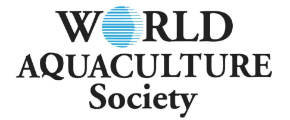MARINE Bacillus subtilis HS1 PROBIOTIC, MARINE CHITOSAN PREBIOTIC AND MARINE SYNBIOTIC SUPPLEMENTED MICRODIETS ENHANCED THE LENGTH GROWTH AND EARLY WEANING SUCCESS OF THE EUROPEAN SEABASS LARVAE IN ALEXANDRIA, EGYPT
Egypt, the 9th world aquaculture producer is also the 1st Mediterranean Sea, Arab and African aquaculture producer (FAO, 2014). Egypt marine aquaculture still depending on fry collected from natural resources (43 million fry, only 0.062 million fry of them recorded as Seabreams and Seabasses fry); although Egypt had 6 hatcheries producing 8.916 million fry, only 2.166 million were Seabass fry (GAFRD, 2013). Not enough or misbalanced or low quality live feeds and microdiets affecting negatively marine hatcheries larval productivity and quality (Salem et al., 2012; Salem, 2014). Marine probiotics and synbiotics enhanced 40dph early weaned European Seabass larvae growth, survival performances and quality (Salem, 2014).
The present study conducted in the marine hatchery (El-Anfoushy) of the Fish Reproduction & Spawning Lab., NIOF, Alexandria, Egypt. The experimental full sib European sea bass Dicentrarchus labrax newly hatched larvae were obtained from hormonal induced spawning, fed on live foods (rotifers and artemia) from 3 dph and reared in the same rearing tank in the marine hatchery larval rearing unit until 30dph according to (Salem, 2014) then restocked in the experimental small tanks for 5 days co-feeding with Orange® P 1/2 Small microdiets with 100-200 micron supplemented with treatments to 35dph according to (Salem, 2014) and then fed for 10 days only with treated Orange microdiets to 45 dph early weaning. The 4 treatments were green water using Nanochlorapsis salina algae (G) as positive control, marine Bacillus subtilis HS1 Probiotic bacteria (MPro), marine Chitosan Prebiotic (MPre), marine synbiotic 1 (1Mpro + 1Mpre mixture) (MS1) and MS2 (1Mpro + 2Mpre mixture) in 30 l tanks in triplicates. Larvae samples were randomly collected from all treatments tanks for individual body length to statistically deteremine the length growth performance.
The results of the 45dph early weaned European Seabass larvae showed that the effect of using (G, MPro, MPre, MS1 and MS2) treatments on final total length (FTL) and final standard length (FSTL) in mm of 45dph larvae showed that the best significant (P < 0.05) recorded by MPro, MPre, MS1 and MS2 while the smallest significant (P < 0.05) recorded by G. The results of the length gains between 30 dph as initial and 45 dph as final lengths showed that the total length and standard length gain in mm; total length and standard length average daily gain in mm/day and total length and standard length specific growth rate in %/day showed that the best results achieved by MS1.










